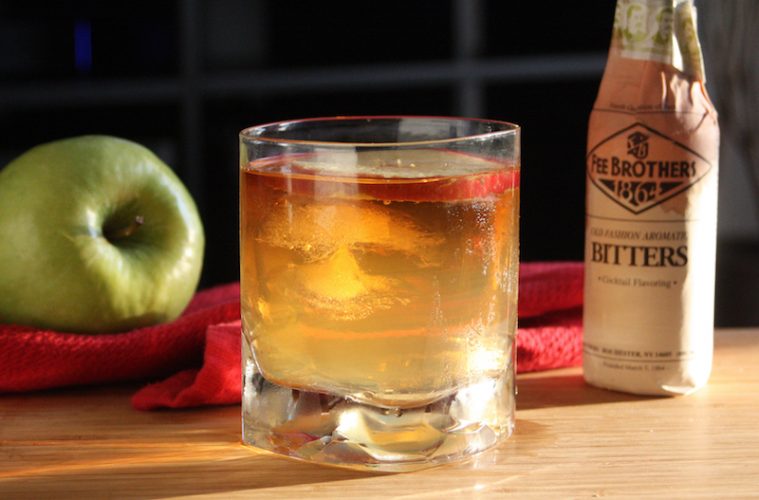What do you get when you leave your hard cider out to freeze? Alcohol that is much more concentrated and higher proof than cider, once the frozen water is removed.
Colonial farmers called this way of removing the water “jacking”—thus applejack, a type of apple brandy, was born. These days, the processes are much more sophisticated as is the finished product. With some of the weight and mouthfeel of a good bourbon, but with a bright, fruity palate, apple brandy is a perfect complement to the golden days of early fall.
Like many fine spirits, apple brandy improves with age and that’s where Flag Hill Distillery in Lee, New Hampshire, is well ahead of the game. Back in 2000, founder Frank Reinhold started working with state and federal officials to open the first legal distillery in the state since Prohibition. And the distillery has been making its Josiah Bartlett Barrel Aged Apple Brandy for at least a decade; owner Brian Ferguson knows this because he has 10-year-old casks aging in his “rickhouse,” the warehouse where spirits age. In fact, most of his bottles feature six- to seven-year-old brandy.
It’s no easy feat for a small distiller. In addition to the sheer carry cost of holding onto inventory for so long, he loses nearly two gallons from each of his 60-gallon barrels every year to evaporation.
“We lose 3 percent to the gods every year,” says Ferguson, who bought Flag Hill from Reinhold about a year ago, after working with him for several years. But it’s worth it. Ferguson says that age is what brings an rich apple taste to his spirit. “There is no way to force that piece,” he says, explaining that complex nuances beyond the oak from the barrel need time to develop. “We have to be patient, which is the hard part,” he says.
The unique New Hampshire climate also contributes a lot to the finished product—perhaps even enhancing its age-worthiness. Ferguson says the combination of hot summers and cold, crisp winters has a tremendous impact on the brandy, giving it a different profile than a product aged in temperate Scotland or the hot Caribbean.
“We want our apple brandy to taste like New England,” he says, explaining that this is achieved in part through exposure to the elements in the uninsulated rickhouse.
Of course, it also comes from choosing the most appropriate local apples. Flag Hill gets all of its fruit from Apple Hill Farm in Concord, New Hampshire. Ferguson says high-acid varieties like ‘Northern Spy’ are best for the brandy, while he chooses high-sugar varieties for the neutral apple alcohol that is the base for Flag Hill’s other spirits, from gin to vodka.
Ferguson says the best way to enjoy his apple brandy is however you like.
“I like it neat, I like it with an ice cube, but I really love it in a cocktail,” he says. Because of its under-the-radar availability during Prohibition, a lot of classic cocktails like the Jack Rose—a blend of applejack, lemon juice, and grenadine, call for apple brandy. Or try this take on an Old Fashioned, perfect for sipping by a fire pit as fall comes into crisp view.
Whatever you do, Ferguson advises, “Just drink it and drink it from us.”
New England Old Fashioned
Makes one drink
1 /2 ounce Flag Hill Sugar Maple Liqueur
2-3 dashes a bitters
2 ounces Josiah Bartlett Barrel Aged Apple Brandy
Barely line the bottom of a rocks glass with crushed ice. Add maple liqueur and bitters. Top with brandy and garnish with a slice of green apple spritzed with lemon juice. Enjoy!
Currently, Josiah Bartlett Barrel Aged Apple Brandy is available at Shubie’s Market in Marblehead, Leary’s Fine Wines in Newburyport and behind the bar at The Poynt in Newburyport. Or visit the distillery in Lee, New Hampshire.

